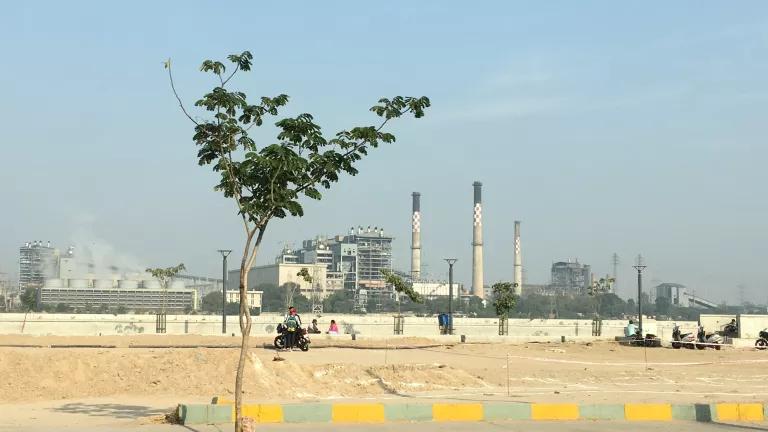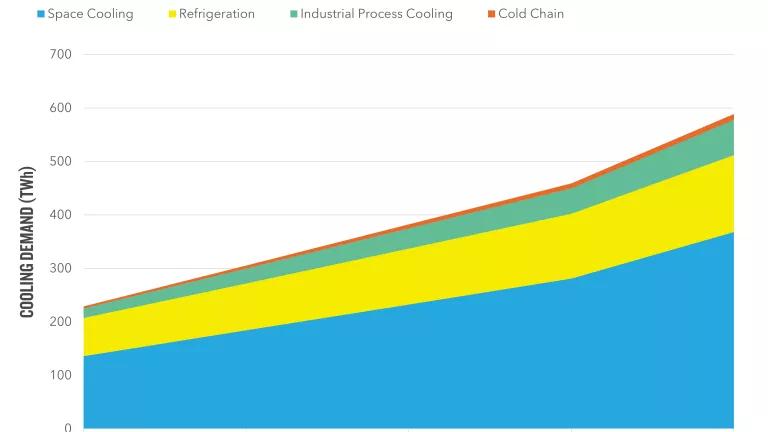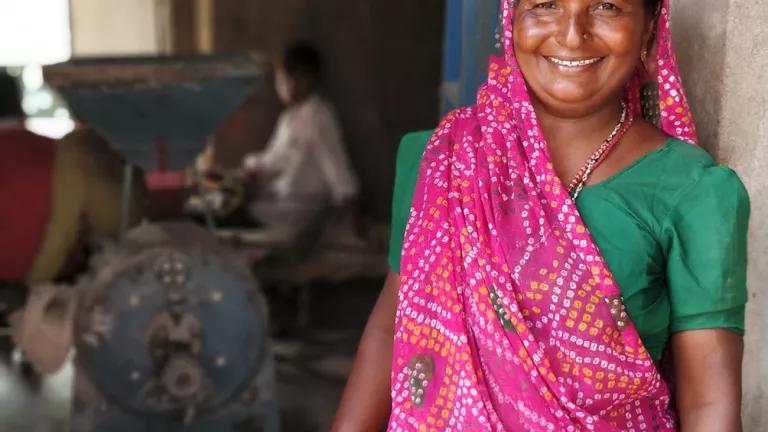Identifying the Health Benefits of Addressing Climate Change in Ahmedabad, India
If we power air conditioning by burning dirty fossil fuels—rather than by harnessing cleaner, renewable energy sources—we increase dangerous air pollution and contribute to the climate crisis.

Climate change, extreme heat, and air pollution are all connected health threats. With global temperatures soaring because of climate change, demand for electricity to keep people cool and safe from sweltering heat is critical. Air conditioning cools indoor spaces, protects our bodies from heat stress, and can save lives. But if we power air conditioning by burning dirty fossil fuels—rather than by harnessing cleaner, renewable energy sources—we increase dangerous air pollution and contribute to the climate crisis. India currently must cope with brutally hot weather and dangerous levels of outdoor air pollution. While millions of people in India already breathe unhealthy air, climate change threatens to make this problem even worse unless governments act to stem the problem on a broader scale.
NRDC led a collaboration with top Indian scientists and policy experts on an applied research project funded by the Wellcome Trust’s Our Planet, Our Health Program. The project estimated the local air quality and health benefits of climate change response actions at the city level. The team used linked computer models to estimate the future air quality changes and health impacts of climate change mitigation and adaptation policies in Ahmedabad, India. The collaborating team included the Indian Institute of Tropical Meteorology (IITM), Gujarat Energy Research and Management Institute (GERMI), and the Indian Institute of Public Health-Gandhinagar (IIPH-G).
Leading Indian scientists at GERMI and IITM estimated Ahmedabad’s electricity demand in 2030, accounting for increased demand for air conditioning. Experts at IITM and IIPH-G then modeled and compared air quality projections for two climate change response strategies to strengthen local resilience to climate threats: increasing the share of renewable solar energy in power generation (mitigation); and expanding cool roofs in Ahmedabad (adaptation). Working together, NRDC and IIPH-G applied these air quality projections to estimate the local health benefits in 2030, comparing a climate change response scenario to a business-as-usual 2030 air quality scenario. Overall, we found that strong climate actions in Ahmedabad could deliver major air quality improvements that result in up to 1,400 fewer premature deaths in 2030. This research, published in the journal Environmental Research: Health, can strengthen the case for expanded action and ambition in India and beyond to address the climate crisis, and to provide near-term improvements for public health. Just as the threats of climate change to public health are intertwined, so are the solutions. Shifting India even further and faster toward clean energy and energy efficiency can help to reduce deadly air pollution, keep people cool and healthier, and stabilize the global climate.
This work was supported by the Wellcome Trust [Grant #216093/Z/19/Z].

Climate Action Delivers Air Quality & Health Gains in India

Advancing Global Heat Resilience & Climate-Friendly Cooling




